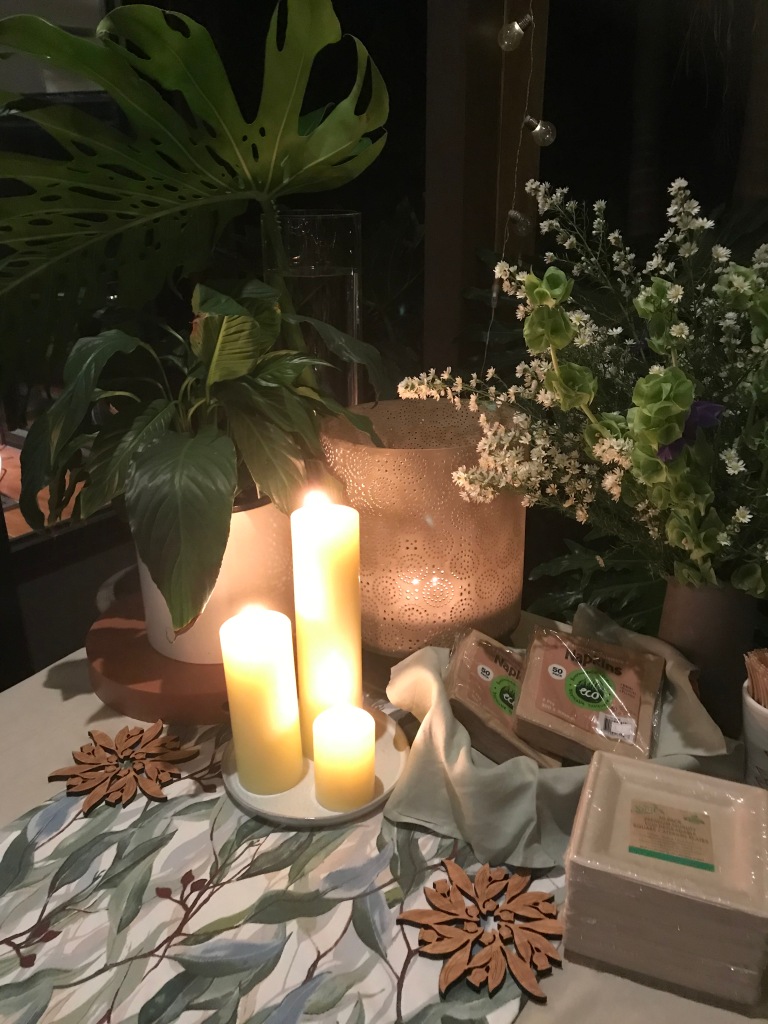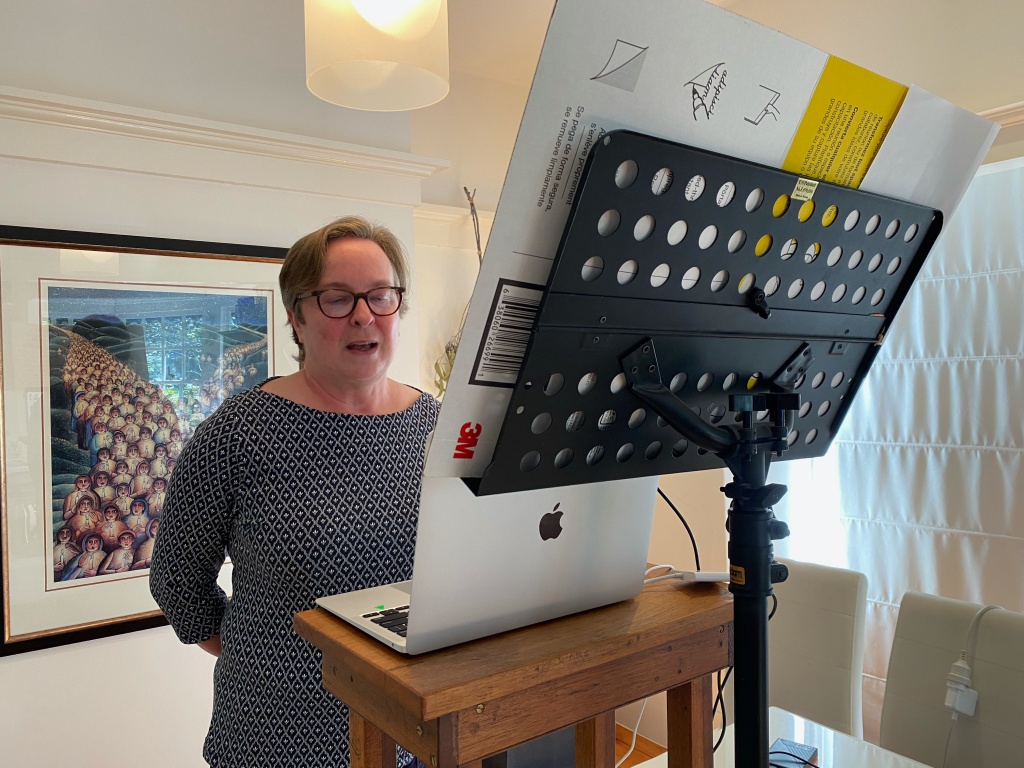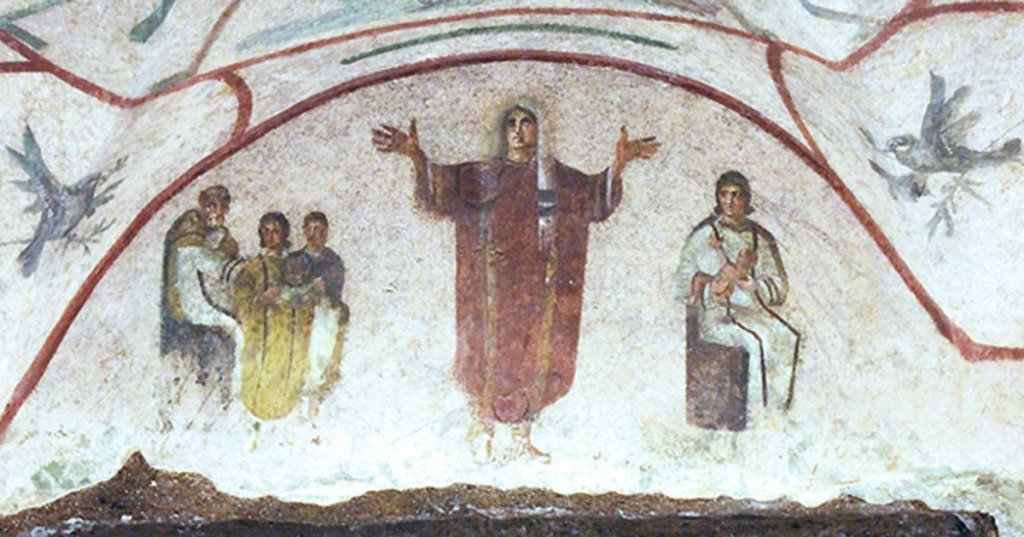Anne Muirhead, 7 July 2022
Today, Anne Muirhead shares her story in her own words.1
At the end of my first year of teaching, my Principal, Deirdre Rofe ibvm, asked me to consider taking on the role of Liturgy Co-ordinator for our P-12 girls’ school. I asked for 24 hours to think about it and then headed straight to the dictionary to find out what ‘liturgy’ meant! It was 1985 and, as a 20-something, I was called into leadership in my faith community. It was the beginning of a journey marked by promise and pain, justice and joy, inclusivity and integration.

The foundations for this leadership role were laid in my history, my DNA and the experience of community fostered by my family, school and faith community. My family is deeply connected to the story of Mary Ward, an extraordinary sixteenth century English Catholic reformer, who believed women could lead and serve God in a spirit of freedom, justice and integrity. Education of women was a no brainer for generations of my forebears. Commitment to parish and school involved tending gardens across the summer, playing the organ at devotions and the Eucharist, driving elderly parishioners to and from their aged care centre, involvement on committees to create a gathering space at our church, being invited into Eucharistic ministry when I was 15. From the get-go we kids knew that we had been blessed with abundant, diverse gifts and these were to be used in service – woman or man, young or not-too-young, university professor or car mechanic. My family also knows how to gather well, with all senses engaged, inclusivity as a guiding principle and attentiveness to those who are struggling in our heart.
My love of liturgy was shaped in an all-female environment, where girls just did everything. I fostered an approach to liturgy planning in schools that encouraged the development of what I called ‘a liturgical antennae’ – an awareness and attentiveness to the needs of the community, local context, wider world and church. The nexus between liturgy, pastoral care and the pursuit of social justice promoted the development of an integrated personal faith and an approach to leadership that brought together the rich strands of our Catholic tradition (art, music, text, Catholic Social Teaching, Scripture etc). Bespoke daily prayers picked up on the rhythms of the school term, United Nations’ days of commemoration, feast days, and times of celebration or devastation in our own context or wider world. Communal prayer was a natural part of our pastoral outreach to the bereaved, the sick, the dying and those who did not even breathe their first breath. Liturgical prayer brought justice into dialogue with moments of transition, ie. with the creation of tais (woven scarves) for each Year 12 graduand we supported an income generating project for women in a Timorese village. Students learnt what it meant to gather and welcome, listen and reflect, respond with creativity and conviction and go out strengthened in faith and in solidarity. Girls did everything: planned, organised, ensured the assembly was comfortable, read, sang, reflected upon the Word, danced, tumbled, shaped space, gathered material goods to be distributed to those in most need, expressed gratitude. I can’t tell you the number of times I have been berated for providing a life-giving liturgical context for girls in schools that would ‘set them up for disappointment’ once they experienced worship in their parishes beyond school. Go figure!

Across 2000-2002 I undertook studies in pastoral liturgy at Santa Clara University in California. The biggest challenges and graces of this period involved the opportunity to reflect on my Australian context from a distance, the leadership of 20 residential chaplains in the wake of 9/11 when one of our students, Deora, was killed in the plane that ploughed into a Pennsylvanian field, attending Friday prayers at the local mosque and escorting my peace-loving Muslim sisters to the supermarket in safety. Liturgical life on campus was rich, and intersected naturally with protests, hunger strikes, Christian Initiation, outreach, service projects and studies. Each Tuesday at 10pm we held a prayer service in a different part of the campus, modelling the Ignatian call to ‘find God in all things’ – in all parts of our lives, in all parts of our university reality, in all parts of our blessed and broken world. I would like to mention here that overseas studies were undertaken at great personal cost. As a US citizen I was able to work, but I held three jobs while undertaking full time study and often went for days eating popcorn as Silicon Valley is not the cheapest part of the world to live in. I waited on my own professors in their academic lounge – it was humiliating and exhausting. I am grateful to the Loreto Sisters for financial support at this time and am so glad to see that more religious orders now supporting women undertaking higher level studies for the sake of God’s reign.

I have always loved the liturgy, been curious about my Catholic tradition and felt comfortable in leadership roles within this realm. This still surprises me as I am an anxious, socially awkward and shy person. But I am incredibly creative, intelligent, well-organised and guided by a desire to shape community and transform our world. And I know that liturgy can do this! In my own life I have been nourished by liturgy and ritual in a hospice, youth remand centre, schools, kindergartens, hospitals, aged care centres … and at times of personal transition (e.g. leaving a religious order). I have called forth and blessed other leaders, anointed the dying, sent Year 12s out to rock the world, conducted global gatherings in solidarity during the worst of the pandemic, brought the history and charism of a religious order into contemporary dialogue with the needs and challenges of our world, conducted funerals for family members, colleagues and friends. My first cremation service was done with no preparation, just a priest informing me at the beginning of the Funeral Mass that he was no longer able to conduct this final part of the rites. I can still feel the body of Catherine’s mum leaning into mine as I asked – ‘let me know when you are ready to let Catherine go’ – before I pushed the button to lower the casket into eternity. I have developed the connection between my pastoral sensitivity and liturgical leadership by walking into the reality of suicide, stillbirth, mental health challenge and transitions. In all humility, I can say that I am good at what I do. I feel called – even required – to use my gifts (of writing, liturgical scholarship, formation, spatial awareness, analysis, event management … even flower arranging!!) … in the service of God and our marvellous and messy world.

Women have been involved in ecclesial and liturgical leadership for all time. I know these women by name: Brigid of Kildare, Juliana of Liege, Mary Ward, Jeannie Donovan of San Salvador, Deirdre Browne, Sherry Balcombe, Elizabeth Young, Benedictine Abbesses, women in rural ministry, prisons, schools, hospitals … every kind of community. Our institutional church is poorer because our love and leadership is not recognised. Our loss and longing spur us onwards. The great liturgist, Dom Virgil Michel, urges us to ‘just live the liturgy’: let us continue to welcome, gather, include, listen to, reflect upon, speak out about, break open the stuff of our lives, pour out our sorrows and joys, share food and resources and stride into the spaces on the margins where women have always been active leaders and full of grace. Maybe our church will meet us there one day.
Thank you so much for escorting us along your journey, Anne!

1Apologies to Anne; the original version of this post had ‘Anne Hansen’ instead of ‘Anne Muirhead’.

Thank you, Anne, for sharing your life journey. It is very inspiring to see your dedication and love of liturgy on the margins.
I also love the last painting of a woman deacon leading perhaps, not only prayer, but a reflection as well. You see the others, seated, intent on what she is saying or has said. A picture says it all!
I hope the role of women deacons is duly and rightfully recognised by the Bishops and Hierarchy of the day!
LikeLike
Anne’s story was so impressive and I wish I could relate something even half as absorbing. I live in a small semi-rural parish at present without a parish priest. Weekend Masses are celebrated by a priest from 30Ks away and who has an onerous workload there. Adult faith development is not core business at this point.
LikeLike
Thank you Anne for this thoughtful and personal reflection.
I know the extraordinarily gifted Anne, and the gifts she offers in whatever arena in which she ministers. Her theological grounding, intelligent, culturally sensitive, contemporary insight and compassionate humble life stance flies in the face of those institutional leaders who know not how to trust, include, or even recognise, the equality of gifted women. Anne represents many women, whose ministerial expertise and credibility are glaringly evident. The diaconate early church image here displayed says it all. WHY NOT for us now?
A beautiful self reflection, Anne.
Thanks and blessings
Db
LikeLike